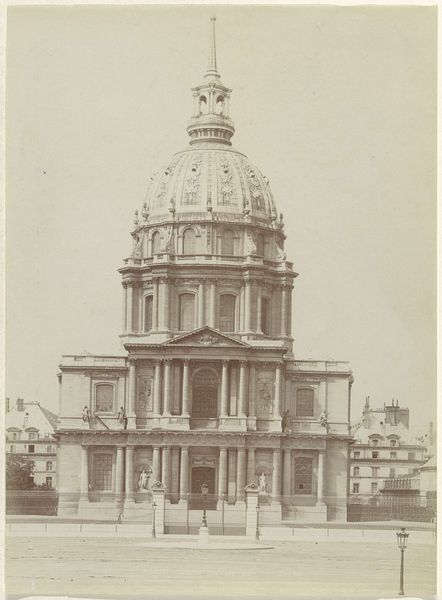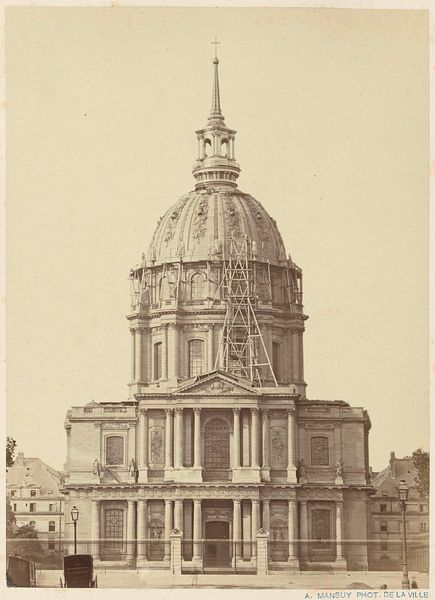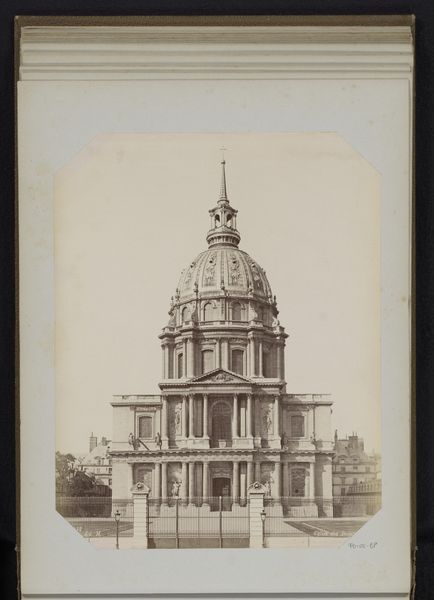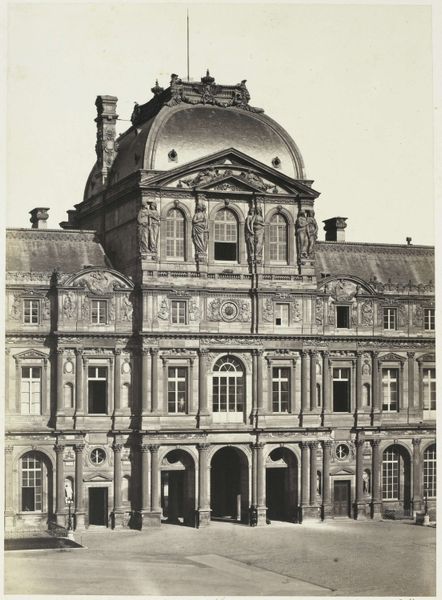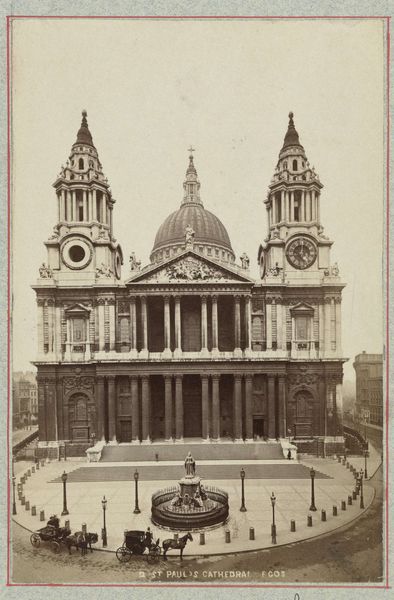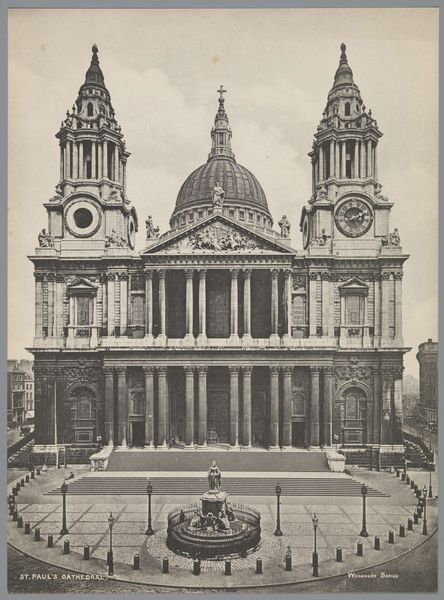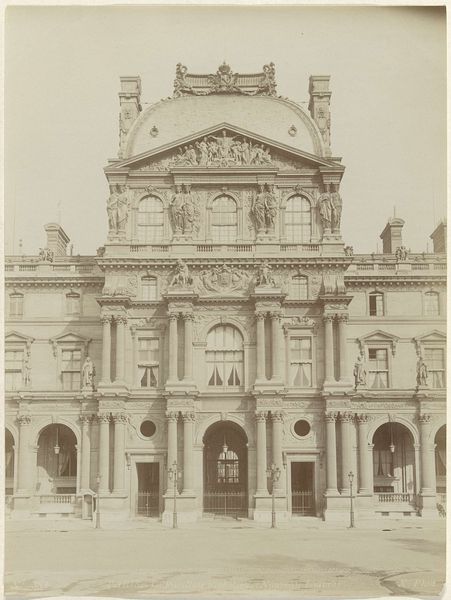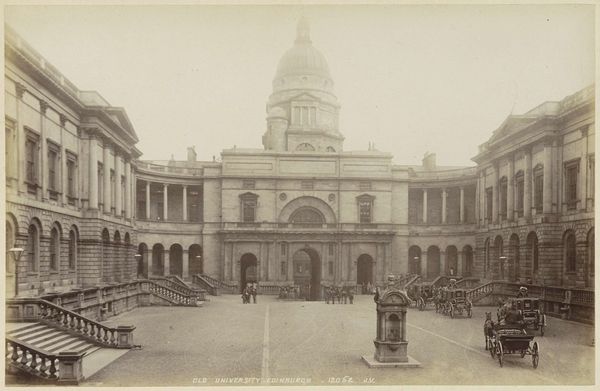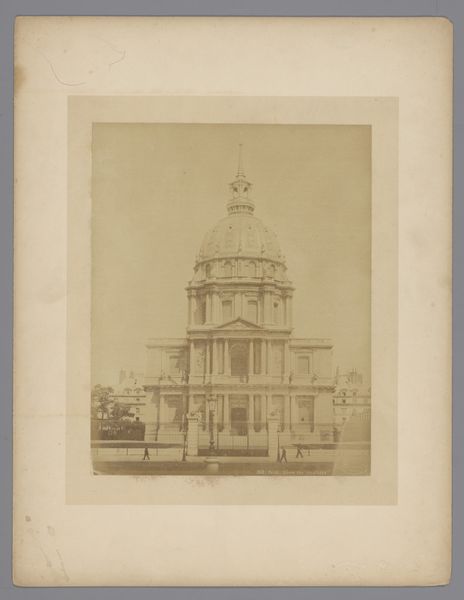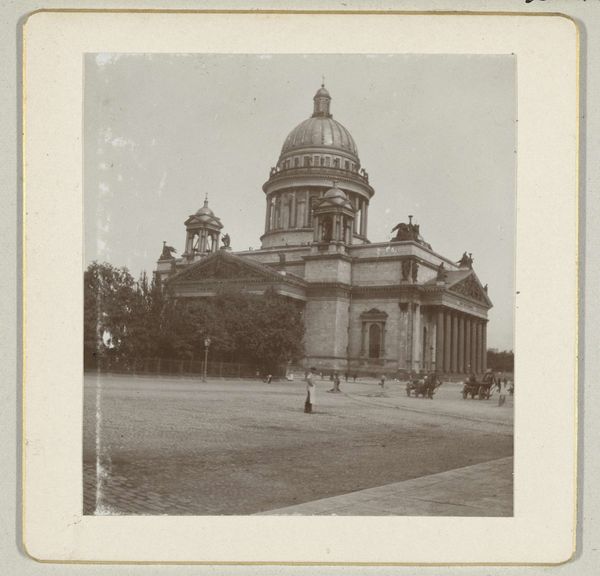
daguerreotype, public-art, photography, architecture
#
landscape
#
daguerreotype
#
outdoor photograph
#
public-art
#
photography
#
historical photography
#
cityscape
#
public art photography
#
architecture
Dimensions: height 278 mm, width 206 mm, height 414 mm, width 310 mm
Copyright: Rijks Museum: Open Domain
Curator: Here we have Édouard Baldus’s “Dôme des Invalides, Paris,” a daguerreotype crafted sometime between 1855 and 1865. It resides right here at the Rijksmuseum. What are your initial thoughts? Editor: It’s quite imposing. The sheer symmetry is captivating, particularly the way the dome dominates the composition, rising with incredible detail. I'm immediately drawn to the interplay of light and shadow across the stonework. Curator: Indeed. Baldus doesn’t simply capture the building; he captures the aura of power and permanence that the Dôme was meant to project. It's fascinating how it was conceived to reflect the glory of Louis XIV, a conscious invocation of absolute monarchy. Editor: You can almost feel that weight of history pressing down. Looking at the meticulous rendering of architectural elements through the lens, I note how the rigorous horizontal and vertical lines offer a structured counterpoint to the curvilinear dynamism of the dome. Semiotically, this could be seen as a balancing of earthly constraints with spiritual aspiration. Curator: Precisely! And consider the symbolism inherent in its function. Initially a royal chapel, it’s inherently linked to the divine right of kings. But its later function as a military pantheon adds another layer, merging divine sanction with martial glory. Editor: I appreciate the balance achieved here. Baldus makes clever use of perspective to enhance the monumentality. He captures an aesthetic order; however, there is also something rigid about the architectural composition—almost forbidding. Curator: Perhaps it’s intended to be! This photograph encapsulates a specific vision of French identity, intertwined with both its regal past and its military ambitions. The Invalides isn’t merely a building; it’s a carefully constructed emblem of cultural memory. Editor: It’s more than documentation. Baldus' use of tonal range really gives form to the architecture, offering an experience that resonates long after our visit. Thank you for lending your perspective to its deeper meaning. Curator: My pleasure! Hopefully this enriches the viewing experience of such a powerful work.
Comments
No comments
Be the first to comment and join the conversation on the ultimate creative platform.
